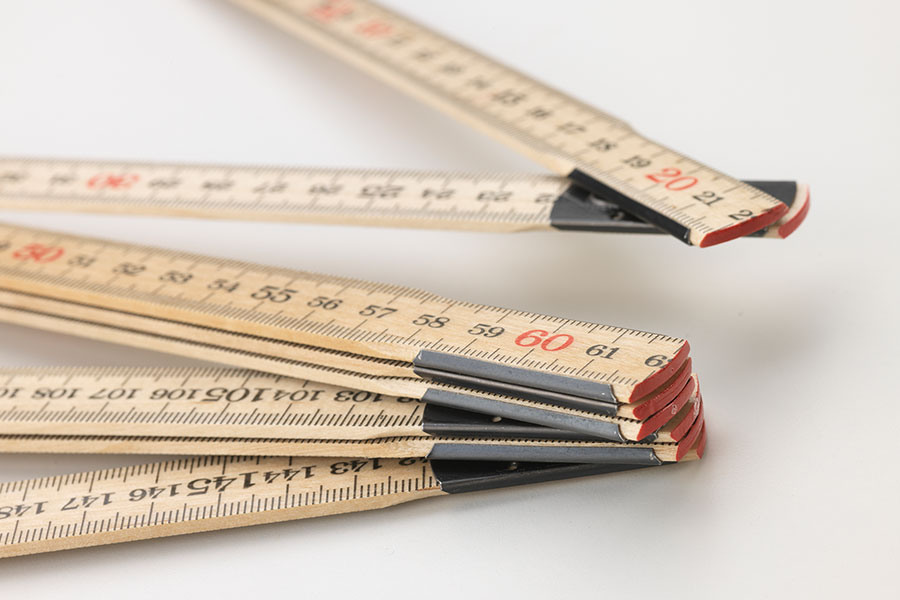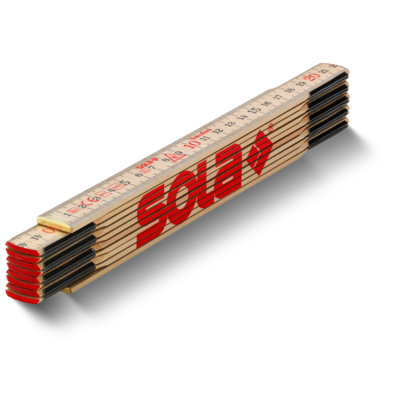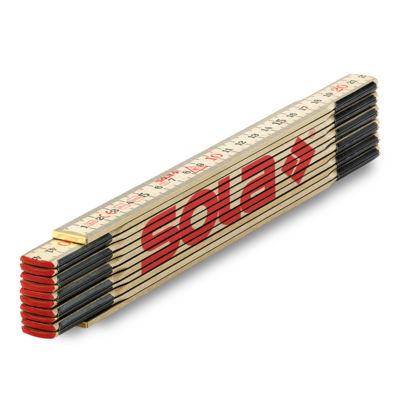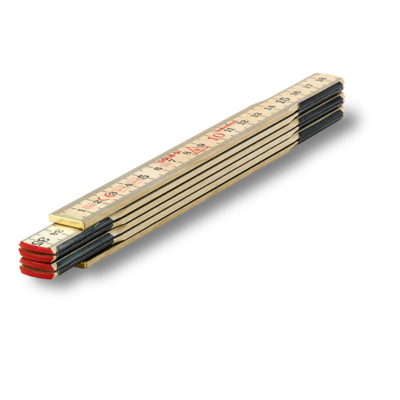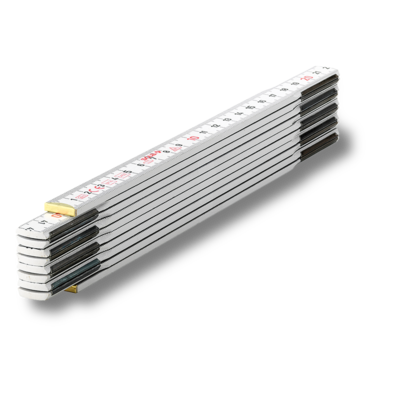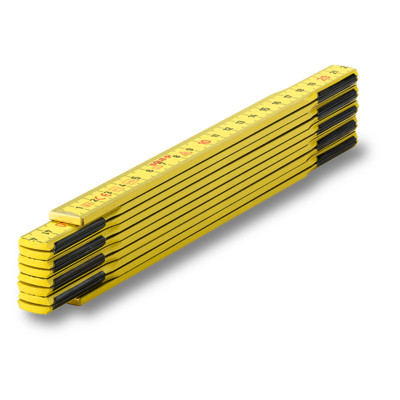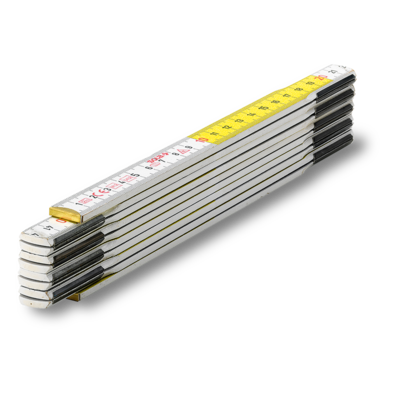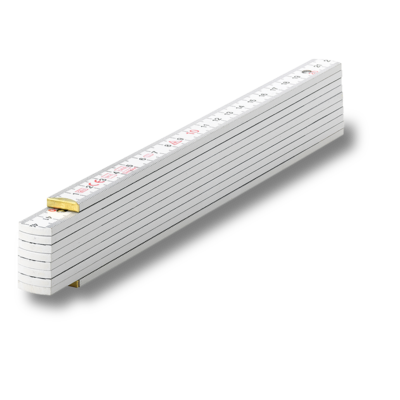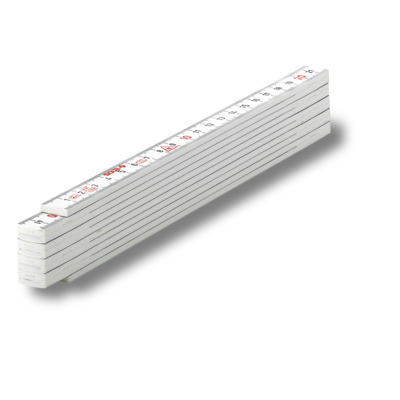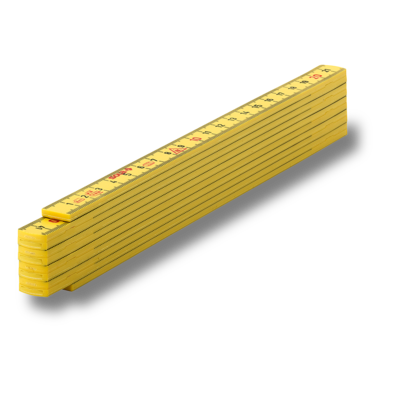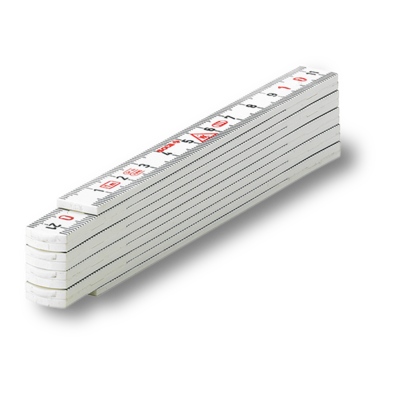Folding rules
FOLDING RULE OR YARDSTICK? IT DOESN’T REALLY MATTER, AS LONG AS IT MEASURES.
Whether you prefer the term yardsticks, meter sticks or measuring sticks: Folding rules are invaluable tools for measuring lengths, used by DIYers and professionals alike.
Once folded out to the require length and laid or held along the distance to be measured, folding rules offer quick measurements. Measurements can be conveniently read off from the scale on the rule.
WHAT ARE FOLDING RULES?
A folding rule or yardstick consists of several parts movably connected to each other at the ends by joints, hinges or rivets. This explains why they are officially referred to as folding rules. The joints are made from steel and feature a spring and latch function. The quality of the joints makes a major difference in how accurate and durable a folding rule is.
When unfolded, folding rules are usually between 1 and 3 m in length. The length of the individual links is usually 10 or 20 cm, depending on the overall length, which allows the folding rule to be folded to a more convenient size.
Folding rules are traditionally made of wood, but may also be produced from plastic or metal depending on the manufacturer.
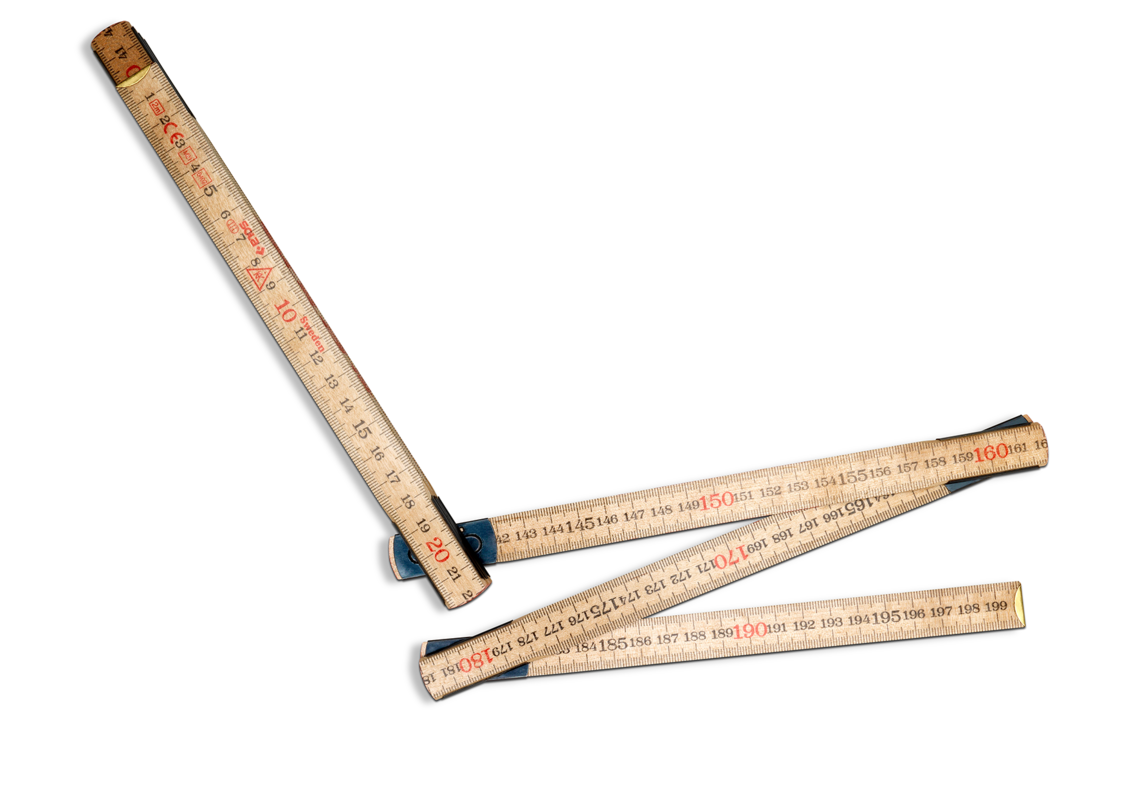
HOW DID FOLDING RULES GET THEIR NAME?
Folding rules can be traced back to antiquity. At the time, pieces of wood were often used in the form of rigid rods or sticks to measure various materials, like fabrics or leather. The standard lengths of rules at the time were based on body parts, like a thumb (an inch was as long as a thumb is wide), a foot or forearm length. The length of a forearm corresponded to two feet, and one foot was measured at 12 inches. At some point, a stick was then divided into inches, marking the creation of the first yardstick. A name still used by some to this day, despite the fact that most countries have now adopted the metric system, using m, cm and mm.
SCALES AND INFORMATION PRINTED ON FOLDING RULES
Scales typically vary depending on the manufacturer and model. As standard, folding rule scales are divided into cm and mm. The scale is printed on both the front and reverse.
Certain professions, such as carpenters or joiners, sometimes use special folding rules with metric divisions on one side and inches on the other, as wood thicknesses are often specified in inches.
Other folding rules are designed for measuring angles or calculating diameters and circumferences.
In addition to the scale on the folding rule, other interesting information stipulated in EU Directive 2014/32/EU dated February 26, 2014 can be found on the front:
- Nominal length of the measuring device
- CE-marking
- Metrology marking and year of registration
- Number from specified body
- EC accuracy class
- Manufacturers name or registered identification mark

HOW PRECISE ARE FOLDING RULES?
EU directive 2014/32/EU defines the accuracy class of folding rulers and rules. A distinction is made between the three EU Accuracy Classes, each of which has its own maximum measuring tolerance. SOLA folding rules correspond to accuracy class III. Guaranteeing the highest degree of measuring precision is an unavoidable prerequisite for all SOLA products.

SOLA FOLDING RULES
SOLA WOODEN RULES
Wooden rules are a classic, used in both professional environments and around the home. Only two types of wood will do when manufacturing a SOLA wooden folding ruler: Nordic downy birch, which grows very slowly in the harsh climate and therefore offers a highly elastic wood; or beech, with its hard and therefore highly abrasion-resistant wood.
To ensure a long lifespan, our wooden folding rules are coated twice on all sides, corners, edges and under the joints with water-soluble varnish, and cured with UV light at the end of production.
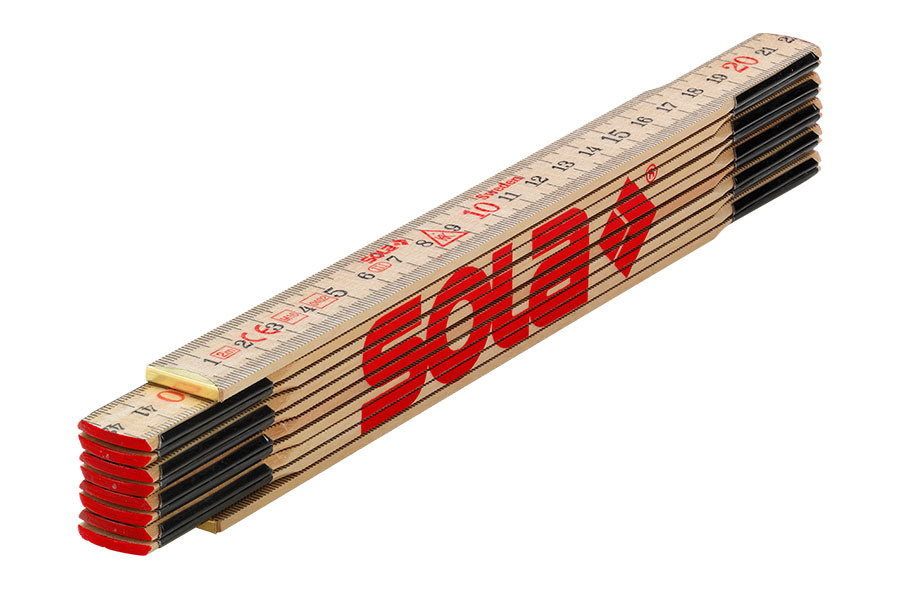
SOLA PLASTIC RULES
SOLA folding rules made from polyamide are 25% glass fiber reinforced. This results in a rule that is considerably less brittle at low temperatures. The advantage: The elasticity of this mix of materials reduces the risk of breakage and ensures exceptional longevity. The primary advantage to plastic rules is their resistance to moisture and fluids, making them idea for brick layers or when painting, coating and plastering.
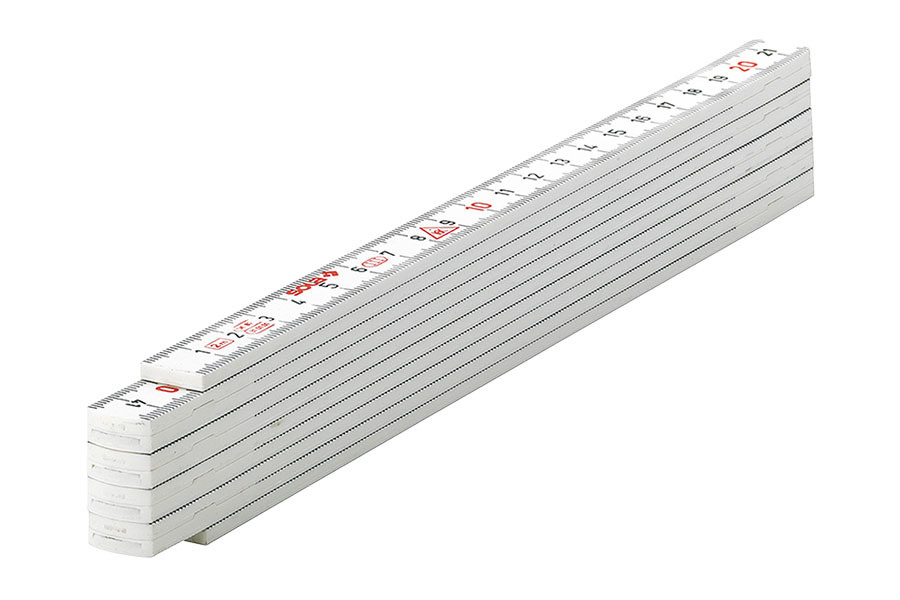
JOINTS/HINGES
The hinges of SOLA folding rules are made of high-grade epoxycoated Swedish steel. They are design to withstand even the harshest of weather conditions and easily passed our endurance test with 15,000 movements to check wear, pivoting and play. Each hinge is lubricated in three different places, to ensure that it runs smoothly.
